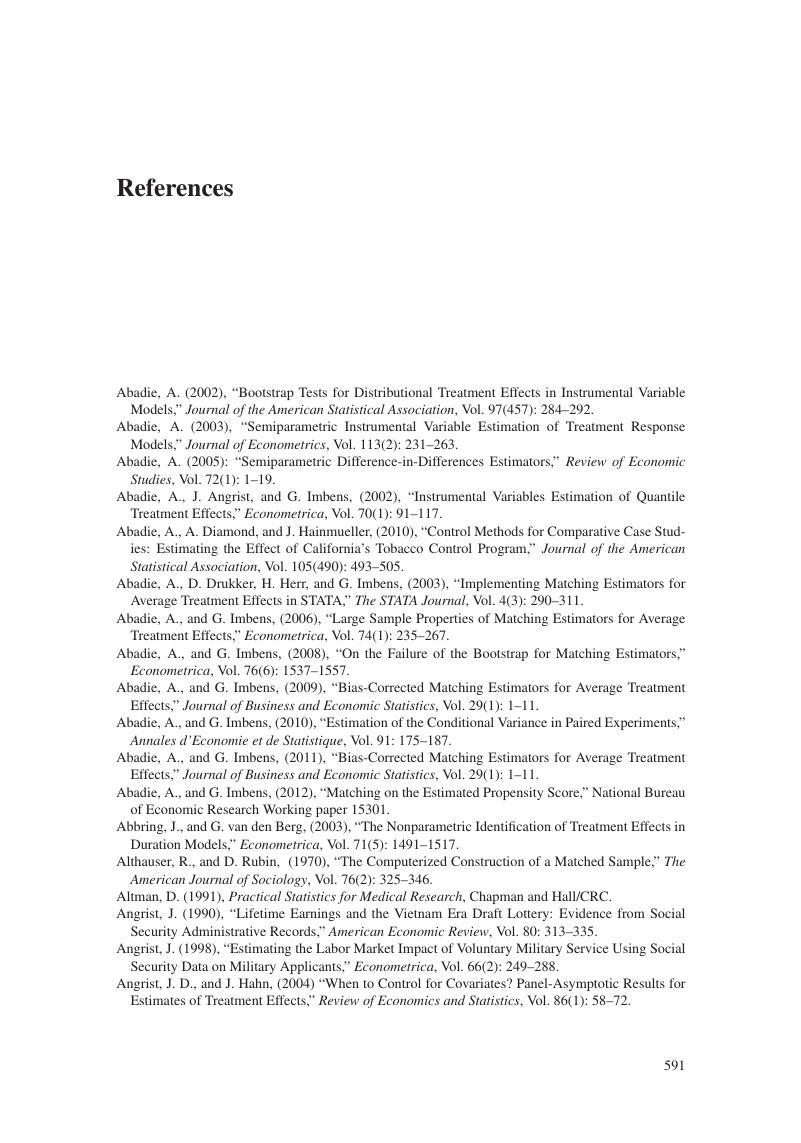Book contents
- Frontmatter
- Dedication
- Contents
- Preface
- PART I INTRODUCTION
- PART II CLASSICAL RANDOMIZED EXPERIMENTS
- PART III REGULAR ASSIGNMENT MECHANISMS: DESIGN
- PART IV REGULAR ASSIGNMENT MECHANISMS: ANALYSIS
- PART V PRGULAR ASSIGNMENT MECHANISMS:SUPPLEMENTARY ANALYSES
- PART VI REGULAR ASSIGNMENT MECHANISMS WITH NONCOMPLIANCE: ANALYSIS
- PART VII CONCLUSION
- References
- Author Index
- Subject Index
- References
References
Published online by Cambridge University Press: 05 May 2015
- Frontmatter
- Dedication
- Contents
- Preface
- PART I INTRODUCTION
- PART II CLASSICAL RANDOMIZED EXPERIMENTS
- PART III REGULAR ASSIGNMENT MECHANISMS: DESIGN
- PART IV REGULAR ASSIGNMENT MECHANISMS: ANALYSIS
- PART V PRGULAR ASSIGNMENT MECHANISMS:SUPPLEMENTARY ANALYSES
- PART VI REGULAR ASSIGNMENT MECHANISMS WITH NONCOMPLIANCE: ANALYSIS
- PART VII CONCLUSION
- References
- Author Index
- Subject Index
- References
Summary

- Type
- Chapter
- Information
- Causal Inference for Statistics, Social, and Biomedical SciencesAn Introduction, pp. 591 - 604Publisher: Cambridge University PressPrint publication year: 2015



